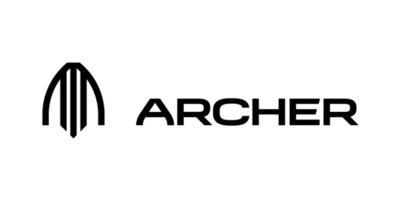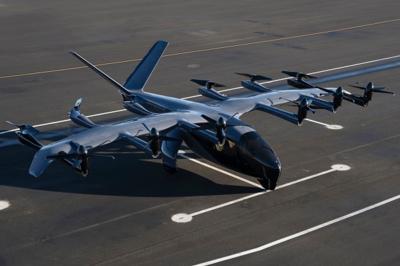Plaintiff Voluntarily Forgoes Litigation
The plaintiff in Cenderelli v. Archer Aviation, Inc., the federal securities lawsuit filed against the latter named party, has chosen to voluntarily dismiss the case.

Formally requested on 21 September 2023, the dismissal came shortly after Archer’s 13 October 2023 filing of a motion to dismiss the case.
Archer’s chief legal officer Andy Missan stated: “We are very pleased that the plaintiff has decided to dismiss the case. Archer continues to remain focused on delivering on its mission and creating value for shareholders.”
For the benefit of readers unfamiliar with the AAM enclave, Archer Aviation is a California-based designer and builder of electric Vertical Take-Off and Landing (eVTOL) aircraft. By virtue of a favorable confluence of solid engineering, fortuitous timing, and perceived environmental exigency, Archer is positioned in the vanguard of the emergent AAM sector.
In August 2023, Archer secured a $215-million equity investment from Stellantis—an American-Italian-French multinational automotive manufacturing corporation—Boeing, United Airlines, and a number of financial institutions including ARK Invest. The capital infusion boosted Archer’s total to-date funding to over $1.1-billion.
Furthermore, the FAA has granted Archer approval to commence flight-testing of its Midnight eVTOL aircraft, a frontrunner in the race to a viable AAM platform.
Painted in broad strokes, Archer’s Midnight is a single-pilot, five-passenger eVTOL aircraft evolved from an antecedent Archer design known as Maker, from which Midnight inherited a flight-architecture comprising 12 electric-motor/rotor assemblies: six five-blade tilt-rotors for forward and vertical flight, and six two-blade fixed-rotors for vertical flight exclusively. The entirety of the aforementioned motor/rotor assemblies are affixed by pylons to a single, high-wing of relatively high aspect ratio. The six tilt-rotor assemblies are positioned forward of said wing, while the six fixed-rotor assemblies are positioned aft of such.

Midnight’s 12 electric motors weigh a miserly 55-pounds apiece and have peak individual power outputs of 125-kilowatts (167-horsepower). The powerplants’ power-to-weight ratio is approximately 3.04-horsepower/pound.
The motors are supplied electrical power by a sextet of proprietary eight-hundred-volt battery-packs comprising cylindrical, type 2170 lithium-ion battery cells provided by the Taiwanese battery manufacturer Molicel. Each of the six battery-packs supplies two motor/rotor assemblies and are interconnected in such a way that load may be varied and individual battery-packs isolated. In addition to providing redundancy in the event of motor or battery failure, the described Distributed Electric Propulsion (DEP) scheme facilitates reductions in power requirements of nearly twenty-percent at the battery cell level—compared to conventional high-voltage battery designs.
So motivated, Midnight attains and advertised cruise speed of 130-knots, a single-charge range of 17 to 43-nautical-miles—dependent upon aircraft loading and flight conditions—and a cruising altitude of two-thousand feet MSL.
Midnight’s ovular-cross-section fuselage sits atop a fixed, tricycle undercarriage; the machine’s empennage is of a V-configuration evocative of Beechcraft’s S-35 Bonanza.

Loaded to its maximum takeoff weight, Midnight tips the scales at seven-thousand-pounds. The aircraft’s maximum payload is nebulously cited as “one-thousand-plus-pounds.”
Archer’s strategy for Midnight’s deployment is predicated upon an Urban Air Mobility (UAM) model comprising twenty-mile back-to-back routes conducted in rapid succession. As Midnight’s design targets a one-hundred-mile-per-charge range, numerous such legs could be flown by a single aircraft.
For initial UAM operations, Archer will rely on existing infrastructure, such as the Manhattan heliport, which anchors a route to and from Newark; and Vertiport Chicago, a facility that will presently serve as the hub for an air-taxi route between the Midwestern metropolis’s famed downtown Loop and O’Hare International Airport (ORD).
 ANN's Daily Aero-Term (05.17.24): Very High Frequency
ANN's Daily Aero-Term (05.17.24): Very High Frequency ANN's Daily Aero-Linx (05.17.24)
ANN's Daily Aero-Linx (05.17.24) ANN FAQ: Submit a News Story!
ANN FAQ: Submit a News Story! Classic Aero-TV: ANN Visits Wings Over The Rockies Exploration Of Flight
Classic Aero-TV: ANN Visits Wings Over The Rockies Exploration Of Flight Airborne Affordable Flyers 05.16.24: PRA Runway, Wag-Aero Sold, Young Eagles
Airborne Affordable Flyers 05.16.24: PRA Runway, Wag-Aero Sold, Young Eagles





